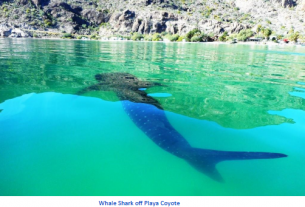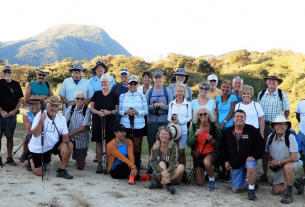By Dan and Lisa Goy on the May 2020 Edition
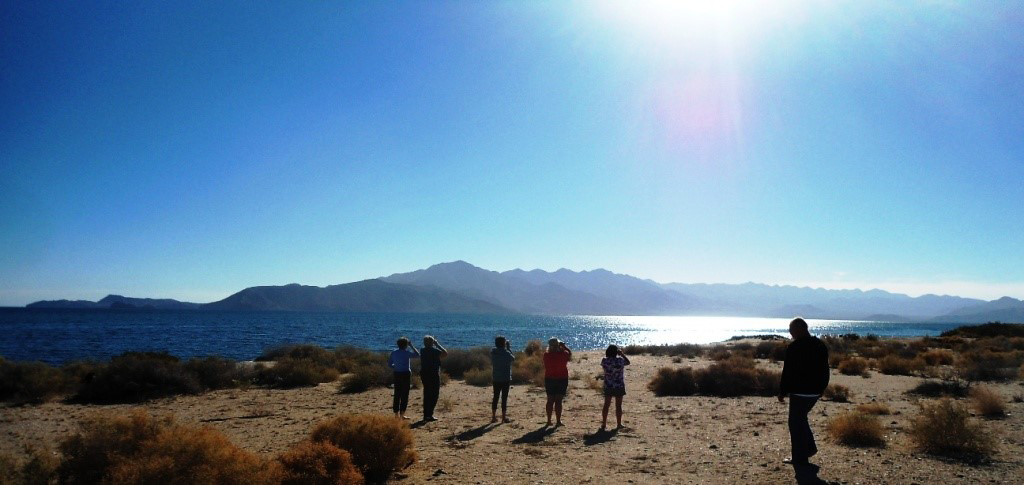
Bahía de los Ángeles (“Bay of Angels”)
Located along the east side of the Baja California Peninsula, in the state of Baja California, Francisco de Ulloa was the first European to discover Bahía de los Ángeles, in 1539, which was the last expedition financed by Hernán Cortés. The village has many islands off the coast and is famous for its fabulous fishing. The most popular fish here is yellowtail, a type of sport fish that lives off the shore of California and Mexico. These fish can grow up to 5 feet long and can weigh up to 100 pounds. The bay is also famous for its whale sharks.
History
The area was known as Adac to the Cochimí people, the abo riginal inhabitants of the central part of the Baja California pen-insula. In the early 1600s, there were approximately 3000 Cochimí inhabiting the area. The area known then as the Bahía de Lobos (Bay of Sea Lions) was explored again, in 1746, by the Jesuit missionary Fernando Consag, during his attempt to investigate the disputed question involving the Island of Califor-nia. Consag is credited with giving the area its current name. In 1752, a loading dock was built to explore Misión San Borja and the entire Baja California Peninsula.
After the departure of the Jesuits from the Baja Missions, the surrounding settlements, known at the time as visitas (“visiting chapels”), were gradually taken over by the locals, Bahía de los Ángeles (Bahía) being one of them.
By 1880, the interest in precious metals had spread to the Bahia region. In 1900, another loading dock was built to export gold and silver obtained from the mines of Sierra San Borja, San Juan, and Santa Martha. The San Juan silver mine at Las Flores became the largest producing mine in all of Baja. The mine was connected to Bahía by an eight-mile, narrow-gauge railroad allowing the ore to be transferred to the port there. The value of the silver produced by the mine was estimated (in 2002) to be 2 million U.S. dollars.
In the mid-20th century, there were only a handful of families residing in the area. Among them were the Daggetts 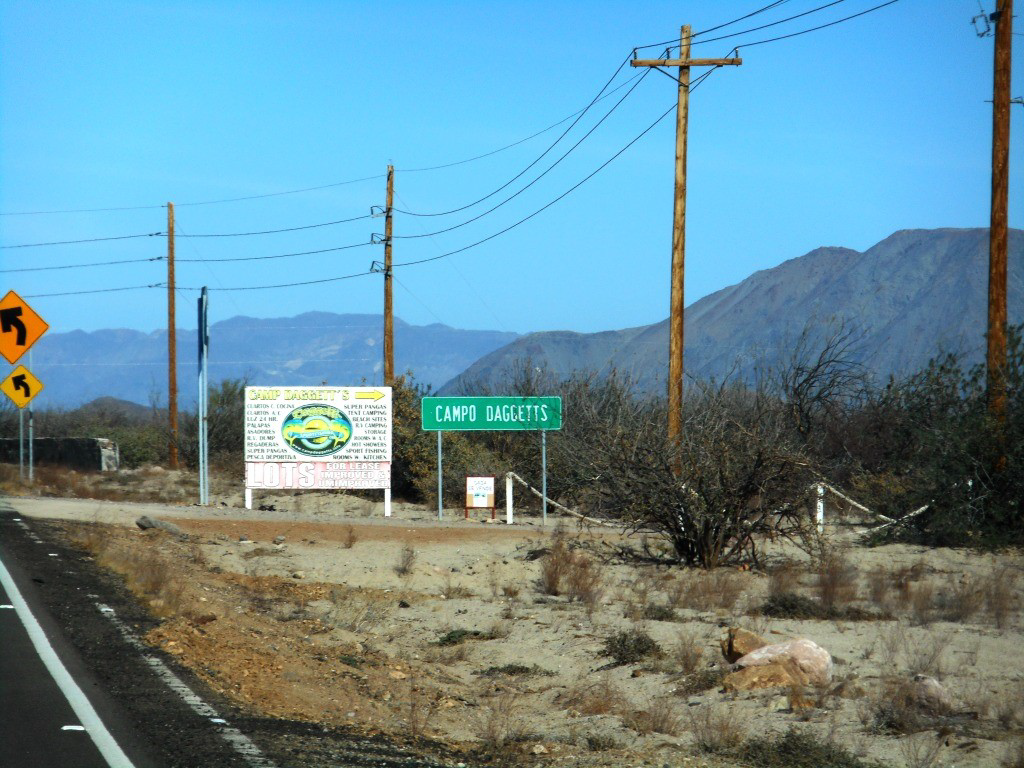 (the chil-dren and grandchildren of Englishman Dick Daggett, Sr.), the family of José “Tilongo” Smith, the Ocañas, Navarros, and Cord-eros. Señor Antero “Papá” Díaz (1914–1989) was the leading citizen of the pueblo known as Bahía de los Ángeles. Díaz and his wife, Cruz Rosas Ortiz “Mamá” Díaz, originated in Mexico City and came to Bahía to work the mine at Las Flores. Díaz became Delegado del Gobierno (Mayor) and built the first school-house and the first church in Bahía. He was instrumental in establishing the town as a sport fishing resort by building a hotel and an airstrip. This allowed fishermen to reach Bahía by air without making the 3-day drive from Ensenada. The original “Casa Díaz” hotel consisted of Mamá’s restaurant and 6 cabins with primitive showers.
(the chil-dren and grandchildren of Englishman Dick Daggett, Sr.), the family of José “Tilongo” Smith, the Ocañas, Navarros, and Cord-eros. Señor Antero “Papá” Díaz (1914–1989) was the leading citizen of the pueblo known as Bahía de los Ángeles. Díaz and his wife, Cruz Rosas Ortiz “Mamá” Díaz, originated in Mexico City and came to Bahía to work the mine at Las Flores. Díaz became Delegado del Gobierno (Mayor) and built the first school-house and the first church in Bahía. He was instrumental in establishing the town as a sport fishing resort by building a hotel and an airstrip. This allowed fishermen to reach Bahía by air without making the 3-day drive from Ensenada. The original “Casa Díaz” hotel consisted of Mamá’s restaurant and 6 cabins with primitive showers.
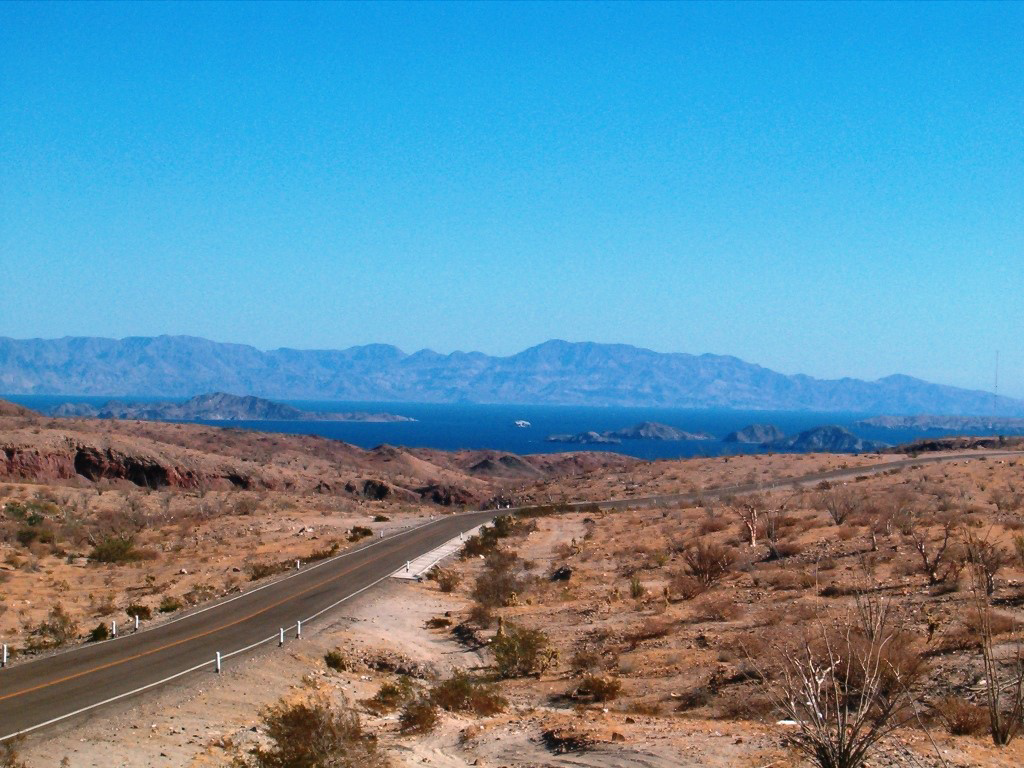
We were first bitten by the Baja Bug, in 1985, in Bahía de los Ángeles. We immediately made an emotional connection to this place of scenic contrast and stunning beauty we had never experienced before. Where the Sierra La Libertad mountain range plummeted into the Sea of Cortez and sunrises nothing less than spectacular greeted you every morning. Many refer to this place as simply Bahía, or LA Bay, which is starkly different from the namesake cousin and US mega city of Los Angeles in the US state of California. The village of Bahía, which continues to host about 800 residents, is aptly best described a sleepy fishing village.
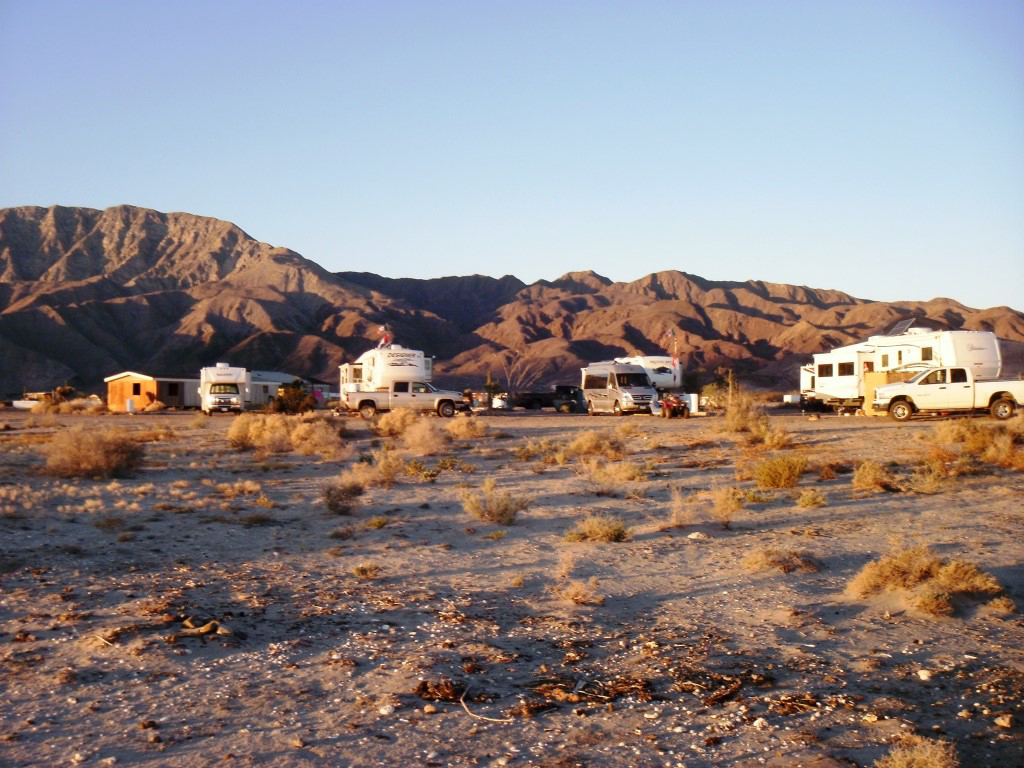
Often many RVers, including RV Caravan Tours, bypass this small town as you must take a 68 km paved road eastward away from Hwy 1 descending to Bahía. This is truly unfortunate as it is a paradise for camping, fishing, kayaking, hiking, ATVing and exploring. The people are always friendly and the village definitely has a small-town charm. The RV parks and campgrounds are basic, with some amenities.
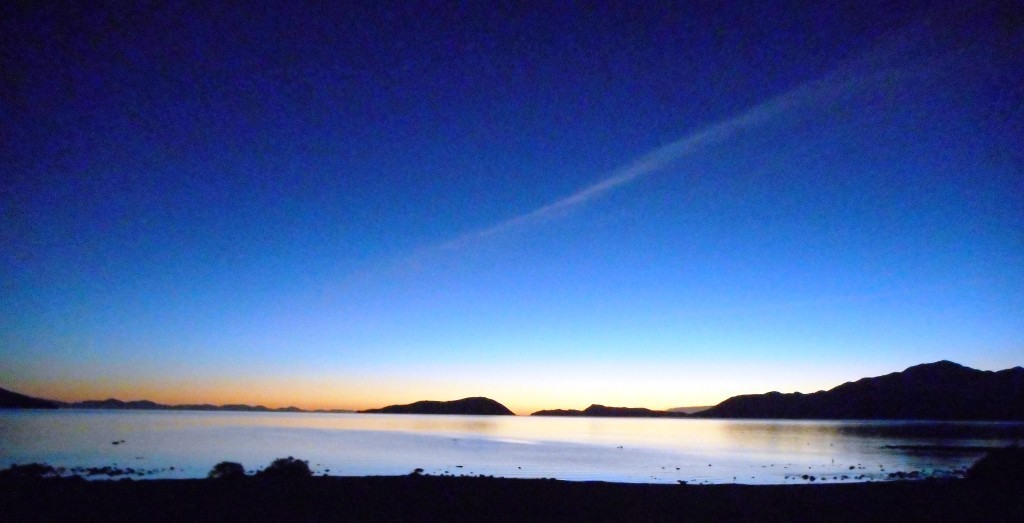
In the past, we stayed at the old, abandoned government RV Park, Brisa Marina”. Sadly, a flood, caused by a hurricane, made this campground largely unusable, washing most of the site into the ocean.
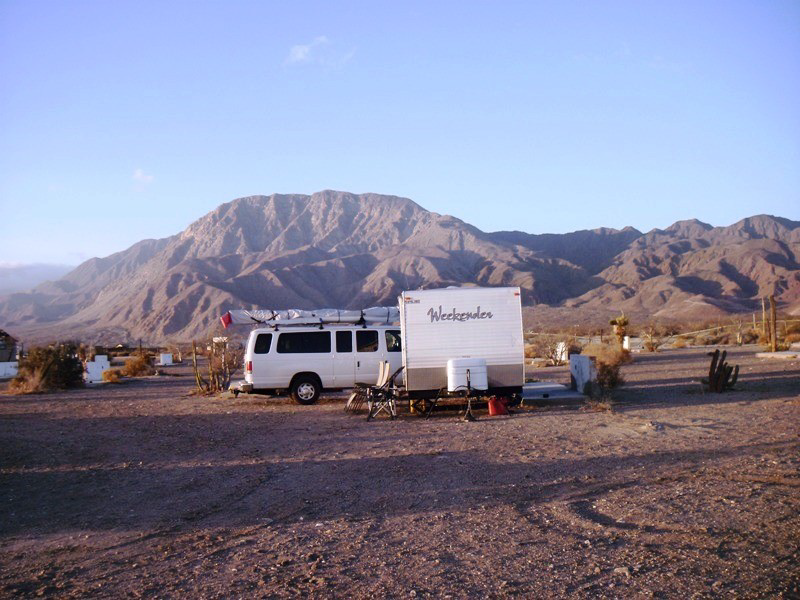
Next door to this RV Park is where our long time friends, Antonio and Bety Resendiz, built a house, raised their family and operated the Campo Archelon campground which is better suited for those without RVs. Antonio and Bety were the original caretakers and researchers of the Turtle sanctuary and research station which is located beside Brisa Marina and which ceased operation after Antonio and Bety retired. We met Antonio on our first venture down Baja with our two children, then ages 2 and 4, in 1985. He invited us to his parents’ house in Mexico City for Christmas, which we graciously accepted and thoroughly enjoyed our visit. Sadly Antonio passed away suddenly at Easter in 2016. Bety still operates Campo Archelon and Antonio Jr. recently opened a coffee shop and bistro on the property.
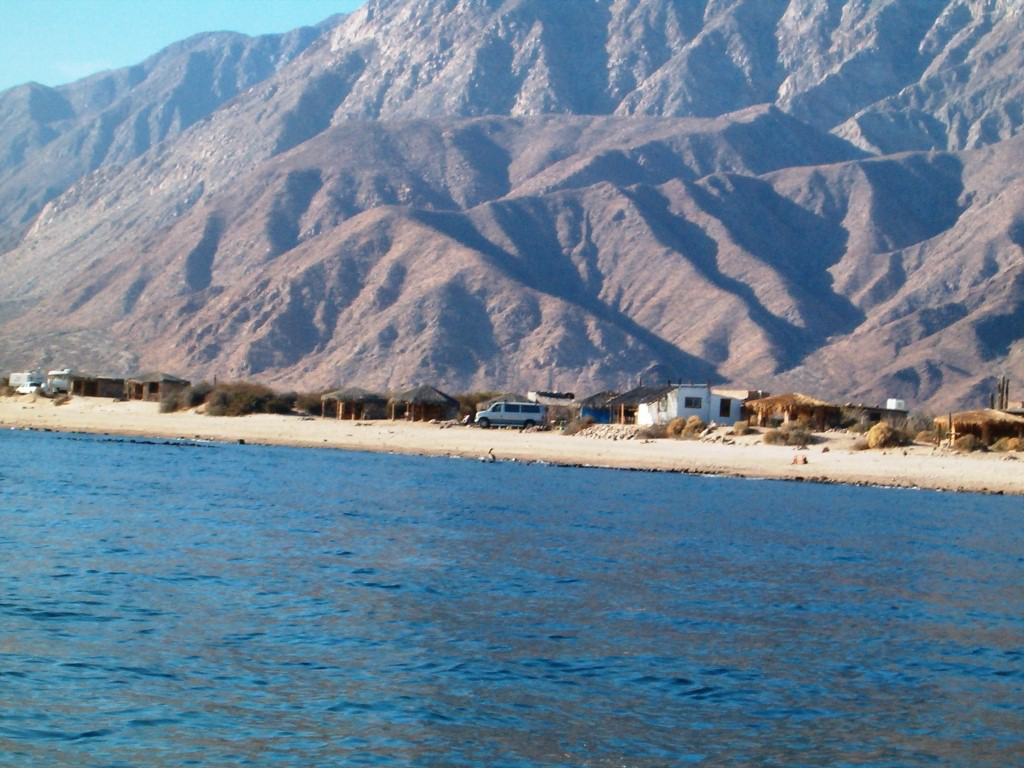
Now our tours camp where the majority of RVers stay, at Daggett’s, only a five-minute drive down the road from “Brisa Marina”. The campground is on the waterfront, with breathtakingly beautiful sunrises. A beach stroll to the lighthouse is very pop-ular. They have actual hot showers and a few sites now have electricity. Those looking for a more remote boon docking experience often head out to Playa La Gringa, just 11 km (7 m) north of town. In recent years, the entire road has been paved and the remaining is passable washboard.
A “must see” is the local Museo de Naturaleza y Cultura museum, established in 1988 by Carolina Shepard Espinoza, run by local volunteers and provides an excellent overview of the history of the town and region. Many boats for hire take you fishing and we would recommend Joe’s Eco Tours, located across from the museo. There is Lucy’s Art Gallery in town, rarely open, but worth seeing, as is the Díaz Onyx Chapel.
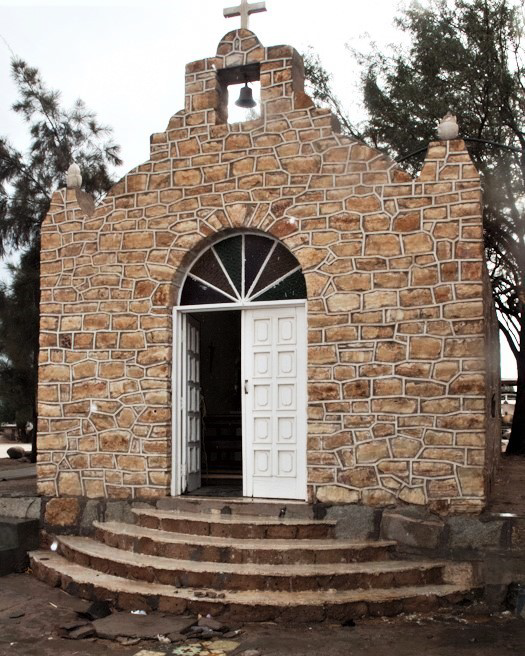
Potable water is available in town, however you need to have a barrel to collect it or you can have water delivered right to your rig, for a price, by locals. 5 years ago, Bahía had no fuel or electricity. Now they have a proper hydro feed and electrical distribution and two (2) gas stations! All of these improvements foreshadow big potential changes for this town. 20 years ago, a boat ladder was planned and started to bring yachts from the Pacific Ocean at Santa Rosaliíta, overland to the Sea of Cortez at LA Bay. This included extensive road widening with paved pullouts along the entire route. The government spent millions on the facility, on the Pacific side, before abandoning the project. We have also seen plans that would turn Bahía into the next Cabo San Lucas (that would be a shame) however, at this time, nothing much has changed. We also know Carlos Slim (Mexican billionaire) continues to purchase vast amounts of property along the coast of Baja, along the Sea of Cortez, from Loreto to San Felipe. Everything you need can be purchased in town although this can be a little pricey compared to other Baja towns. Internet is available at a couple of stores and many snowbirds spend the winter here.
The whale shark, Rhincodon typus, is a slow moving filter feeding shark, the largest living fish species. The largest con-firmed individual was 12.65 metres (41.50 ft) in length. The heaviest weighed more than 36 tonnes (79,000 lb), but unconfirmed claims report considerably larger whale sharks. This distinctively marked fish is the only member of its genus, Rhincodon, and its family. The whale shark is a filter feeder, one of only three known filter feeding shark species (along with the basking shark and the megamouth shark). The many rows of teeth play no role in feeding; in fact, they are reduced in size in the whale shark. Instead, the shark sucks in a mouthful of water, closes its mouth and expels the water through its gills.
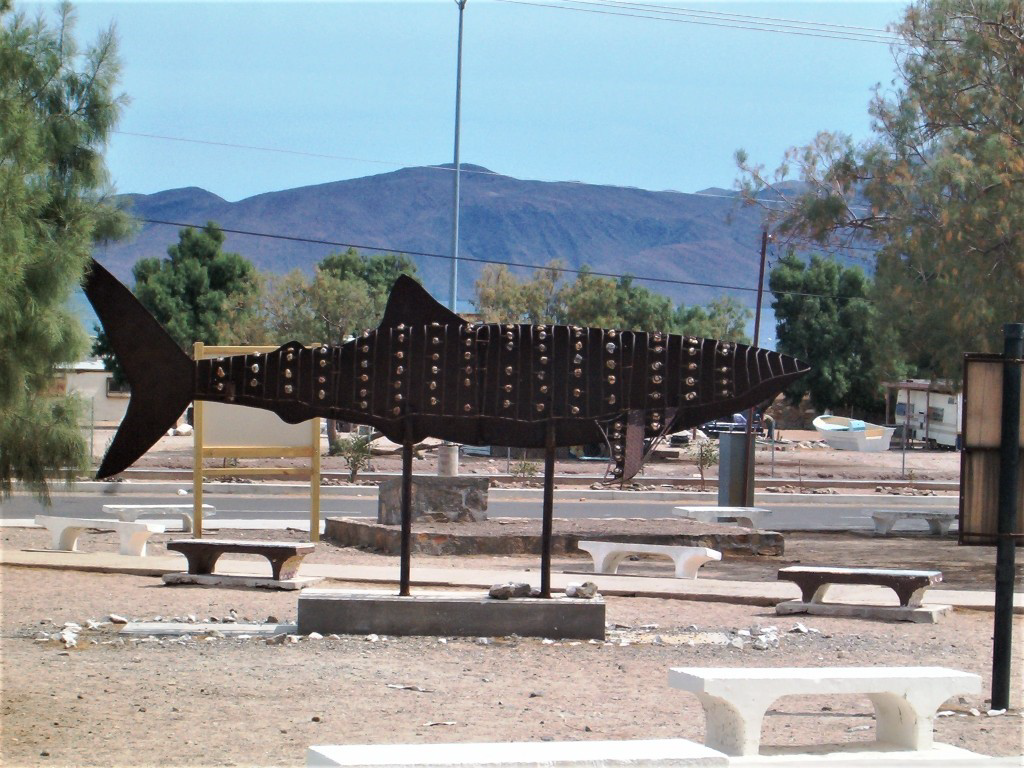
Another popular attraction is Misión San Francisco Borja de Adác (aka San Borja Mission) which was established in 1759 by the Jesuit padre Wenceslaus Linck, at the Cochimí settlement of Adac, west of Bahía de los Ángeles. The San Borja Mission was handed over to the Franciscans in 1767, along with large numbers of sheep, goats, cattle, horses, and mules. In 1773, the Dominicans took charge of the mission property and the 1,600 Amerindian parishioners in the Adác community.
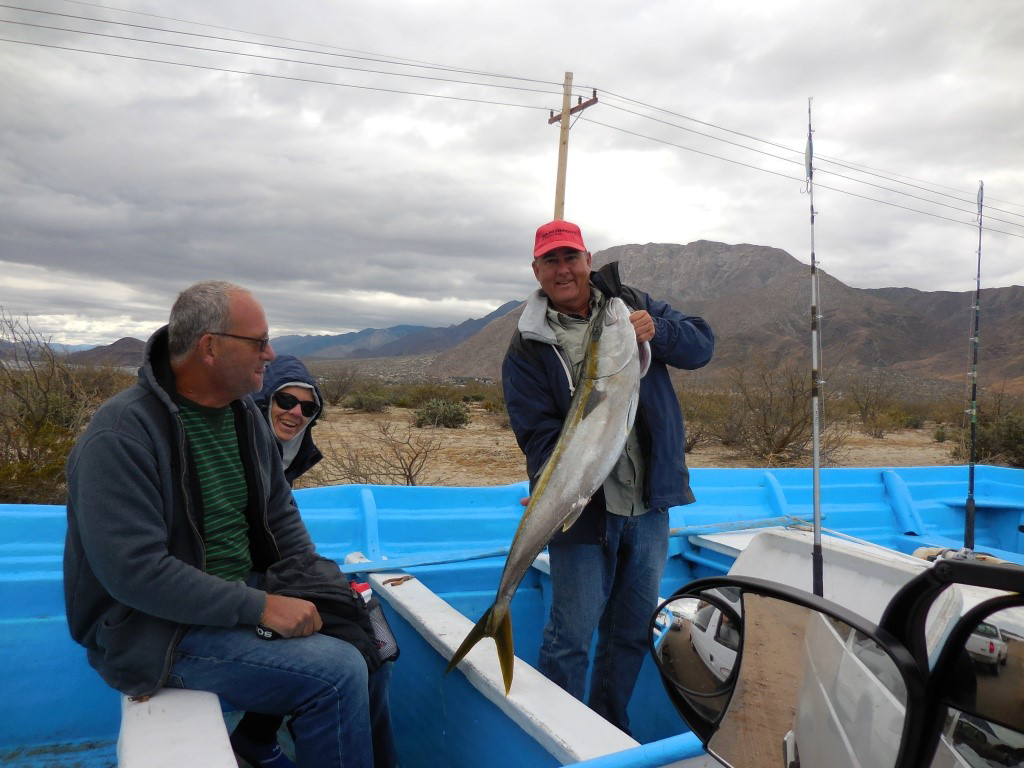
The stone church was completed in 1801, then abandoned in 1818, when the native population in this part of the peninsula disappeared, although the structures and ruins survive. Ruined adobe walls of the original Jesuit mission the last to have been built anywhere on the peninsula have been preserved. A stone spiral staircase in the campanario, or bell tower, of the later Dominican mission, is impressive.
The fig, pomegranate, olive, guava, mango, and date orchards, planted by the missionaries, continue to provide a livelihood for mission caretaker, José Ángel Gerardo Monteón, a fourth-generation Cochimí, and his family of seven. The mission is open daily 8 a.m. -6 p.m. José’s children are happy to take visitors on a half-hour walk through the orchards to a small, clean hot springs. A longer, 1.5-hour tour to see local rock art using your own vehicle can also be arranged. The family doesn’t ask any set fee for such tours, although a donation is much appreciated.
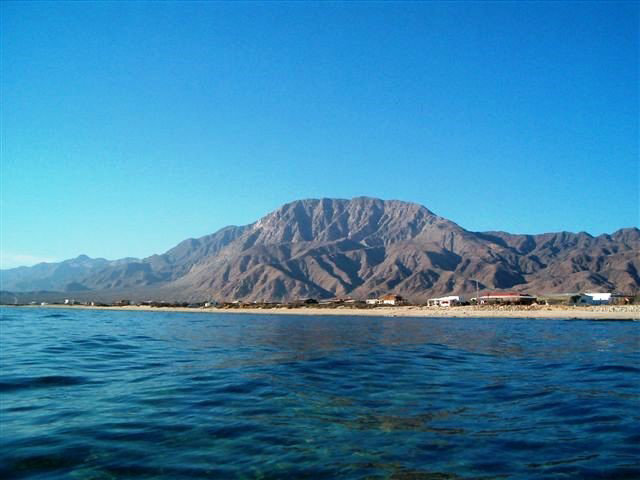
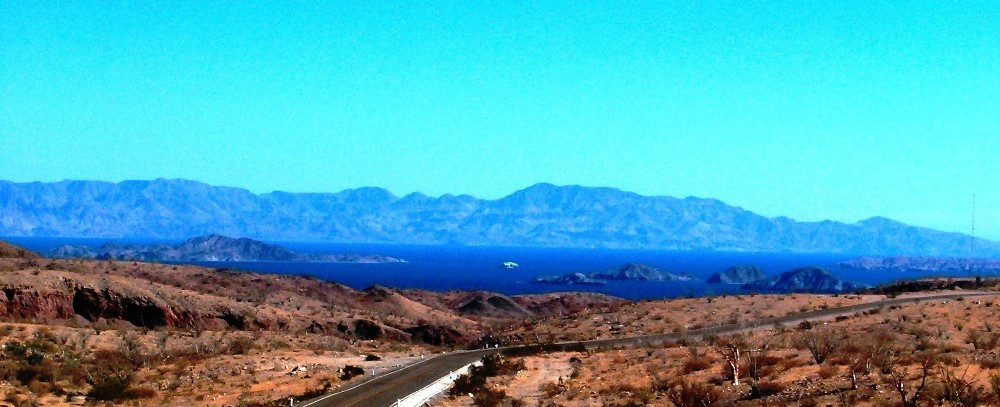
Although the road to the Mission, located at KM 44 from Bahía de los Ángeles, is graded, there are still two or three spots where four wheel drive is advisable, due to the steep, slippery grades, deep vados (dips or canals), and stretches where you must drive 10 meters or more over basketball-size boulders.
Bahía even had a local celebrity, an American, Herman Hill, who wrote the book, BAJA HIDDEN GOLD: Treasure Along the Mission Trail. Herman resided alone in his beachfront home in Bahía de los Ángeles. For many years, his stories, filled with humour and verve, illuminated the history of the beautiful Baja Pueblo of Bahía de los Ángeles. A prospector, a dreamer, and an adventurer, Herman’s stories capture both a region and a lost time in history. Our tours always included a stop to see Herman and ask him about his book and life in Mexico. Sadly, Herman passed away in December 2013, at 93, in a single vehicle accident, on Hwy 1.
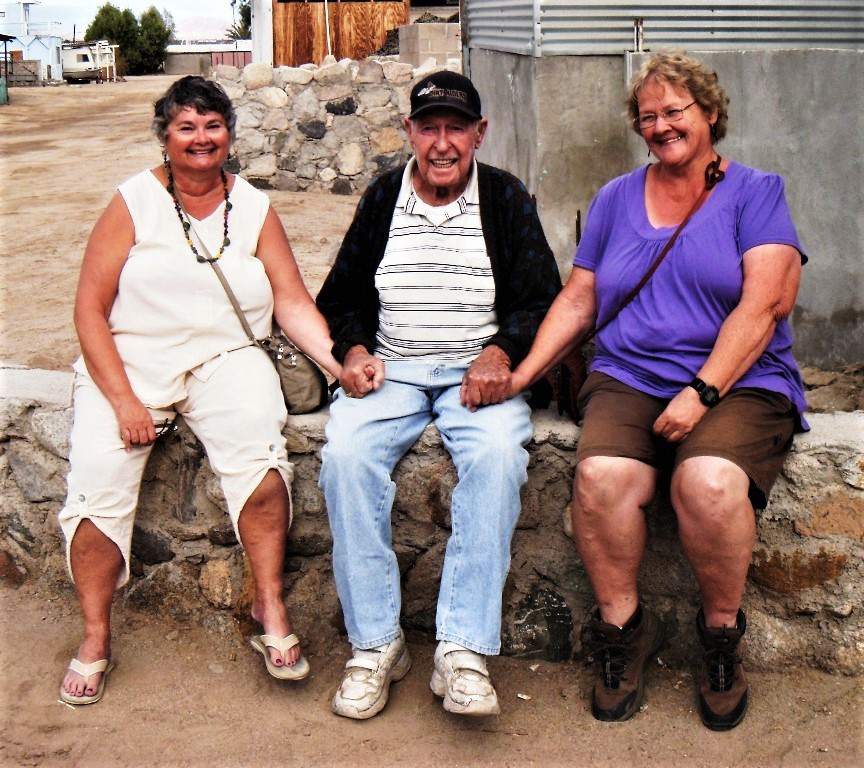
Biosphere Reserve
In 2007, Mexican President Felipe Calderón, in cooperation with the nongovernmental organization Pronatura Noreste, Mexico’s National Commission for Protected Areas, the Global Conservation Fund (GCF) and others established the Bahía de los Ángeles Biosphere Reserve to protect the unique ecology of the region. It covers an area of almost 1500 square miles (387,956 hectares) and includes a portion of the Baja coastline, all 16 is-lands, numerous smaller islands and islets and the Canal de Salsipuedes and Canal de las Ballenas.
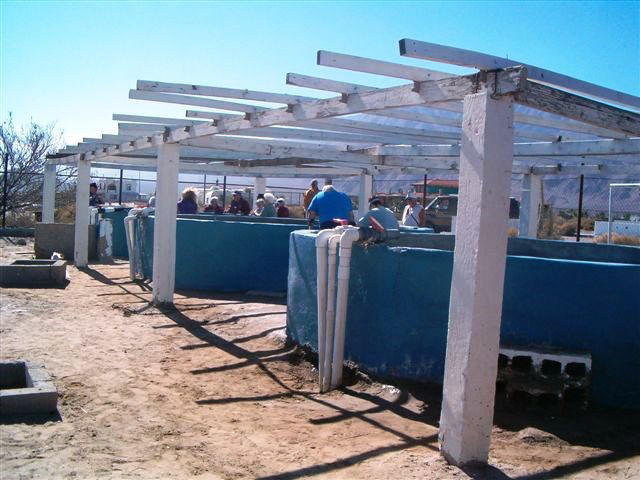
The reserve protects a diverse marine population, with many endangered species including whale sharks, fin whales, California sea lions and five species of sea turtle. The reserve is within the UNESCO “Islands and Protected Areas of the Gulf of California” Mexican World Heritage Site.
Dan and Lisa Goy own and operate Baja Amigos RV Caravan Tours and have been camping and touring in Mexico since 1985. http://www.bajaamigos.net
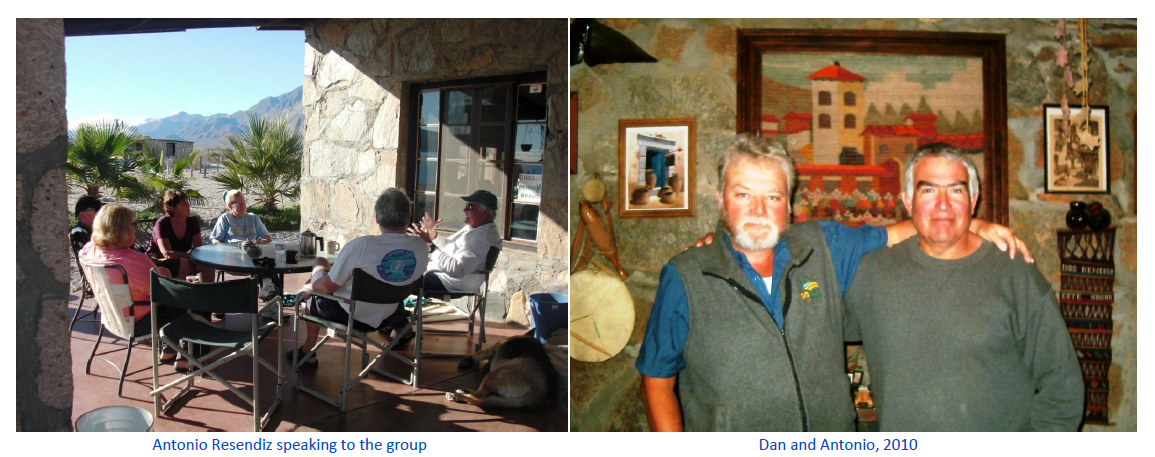
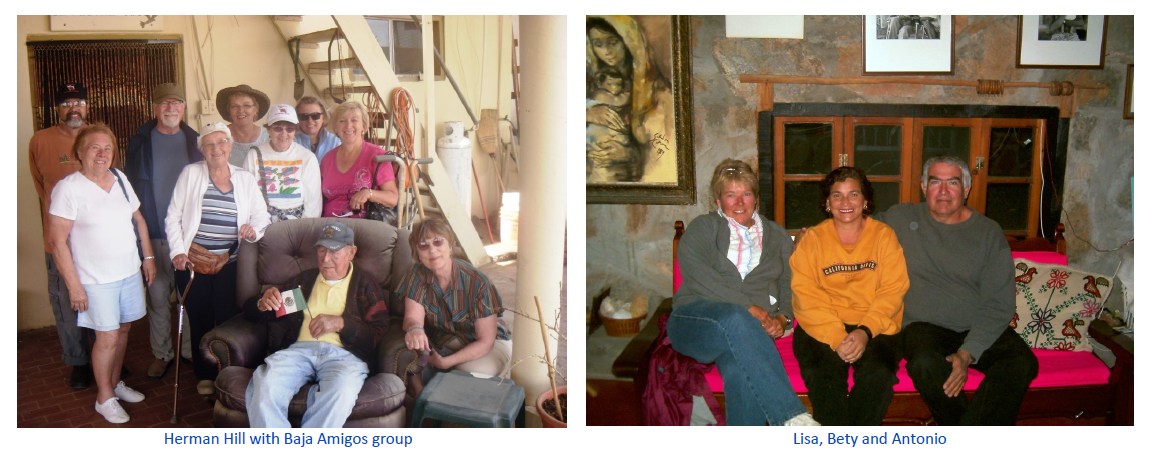
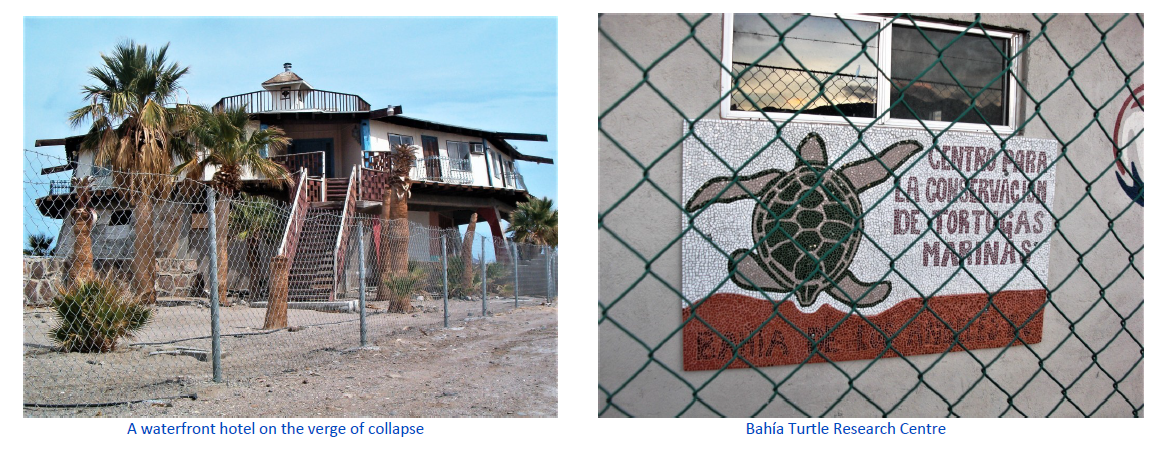
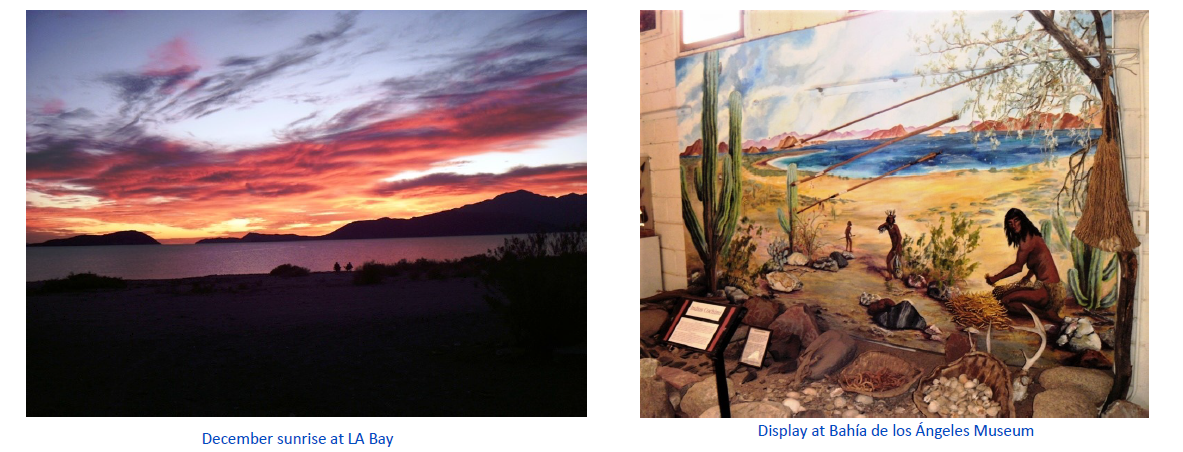
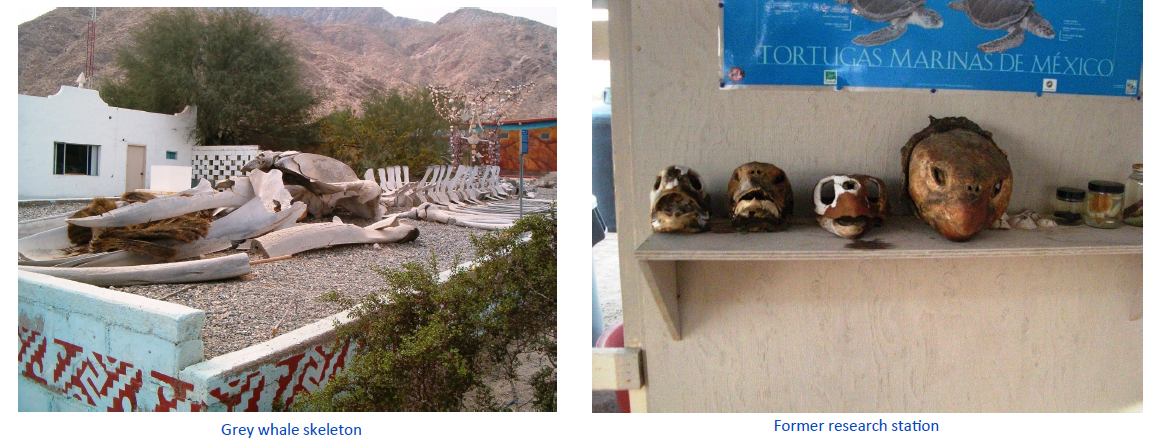
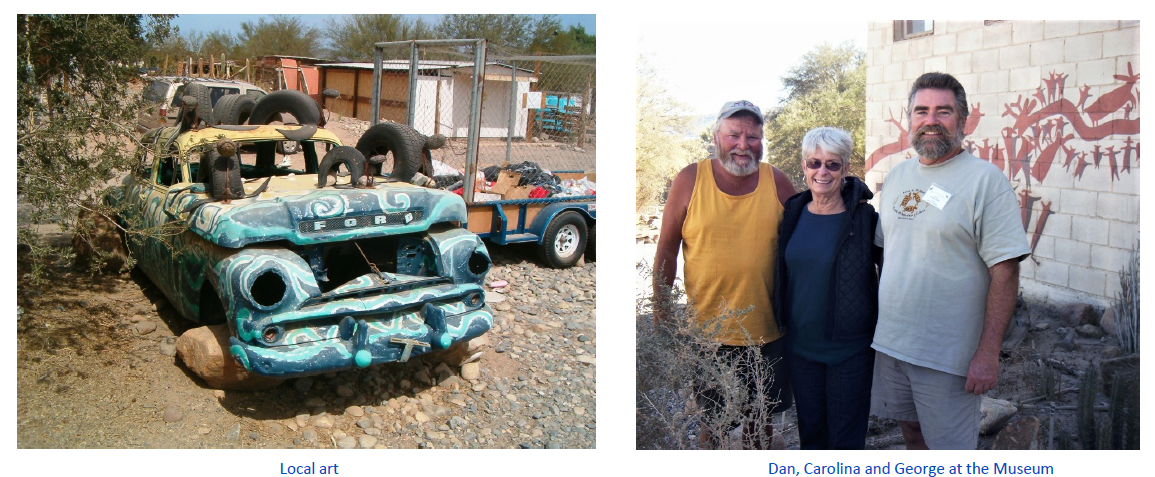
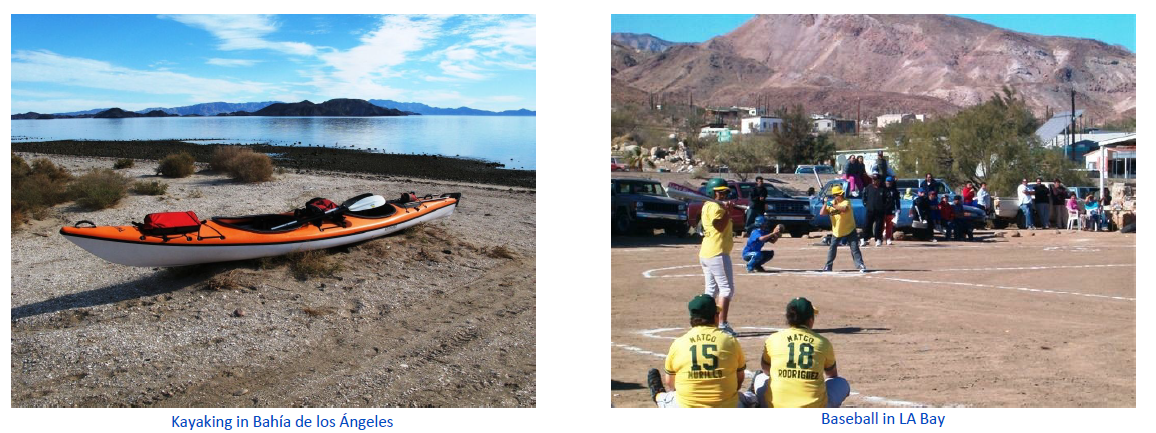

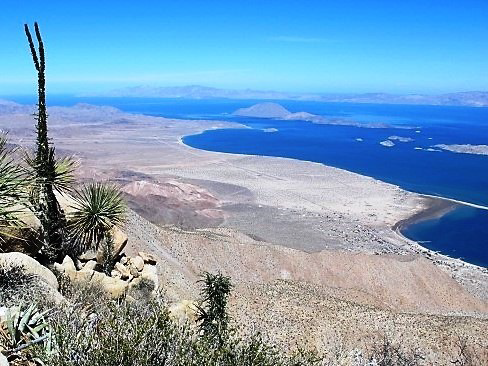
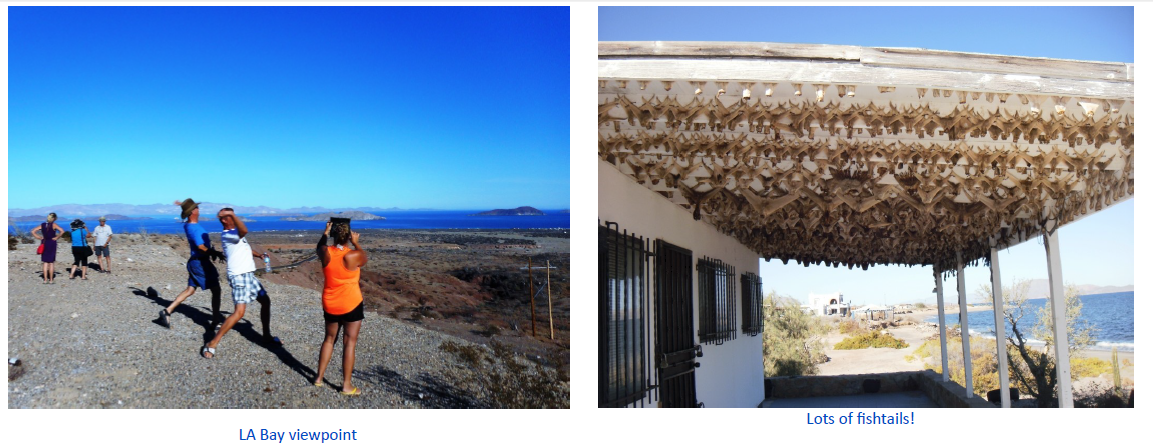
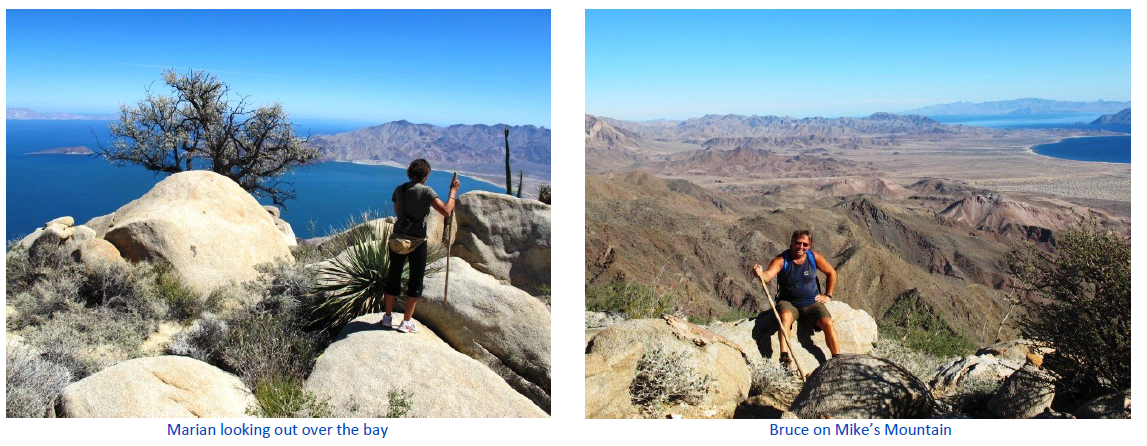
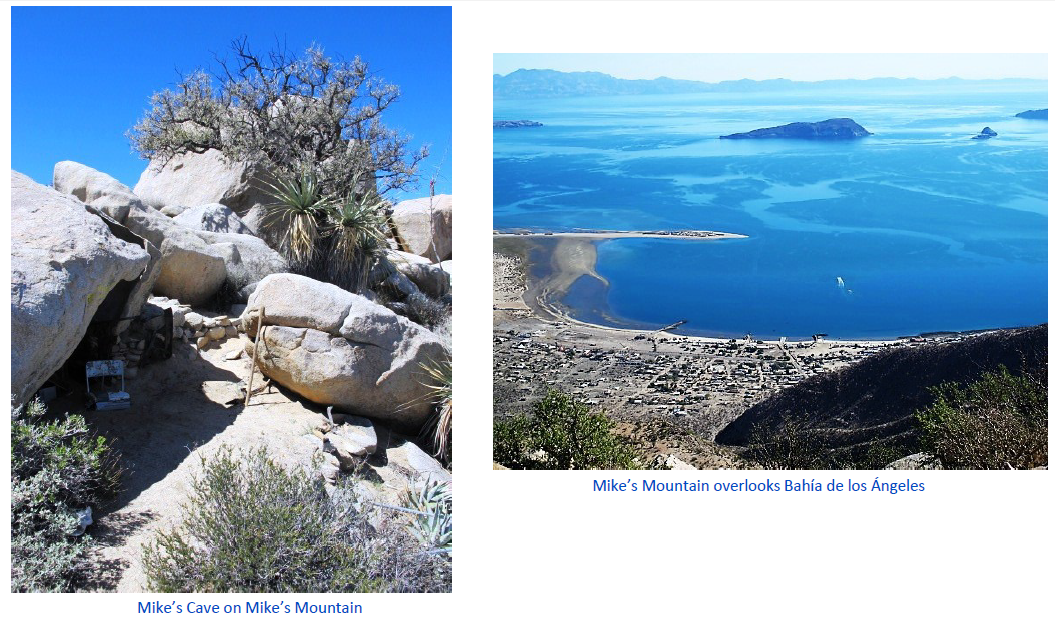
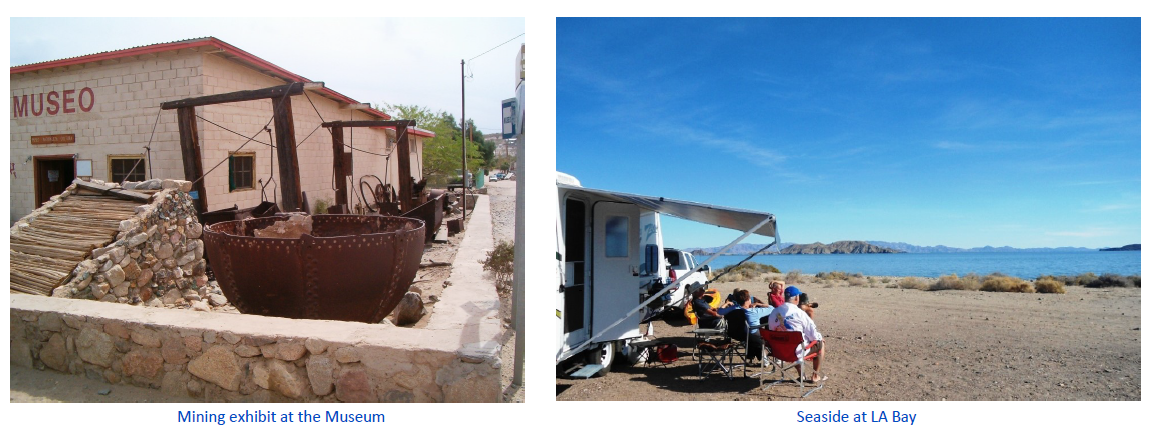
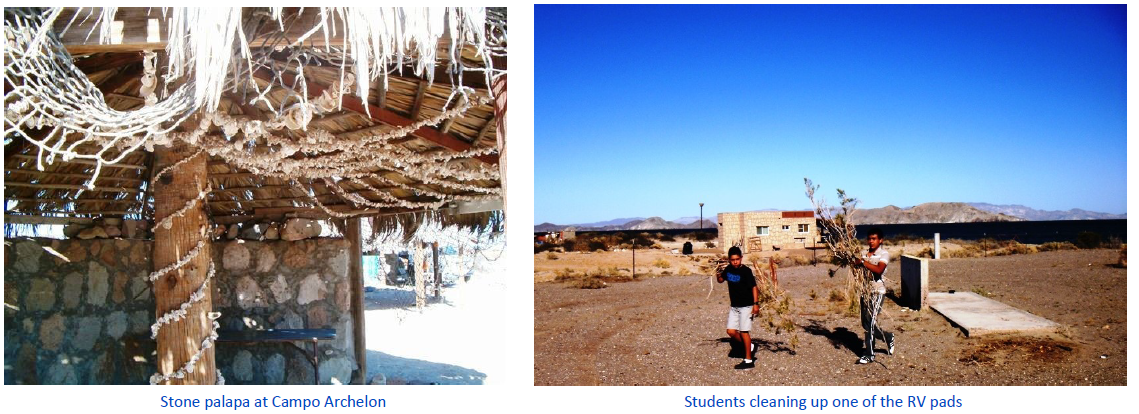
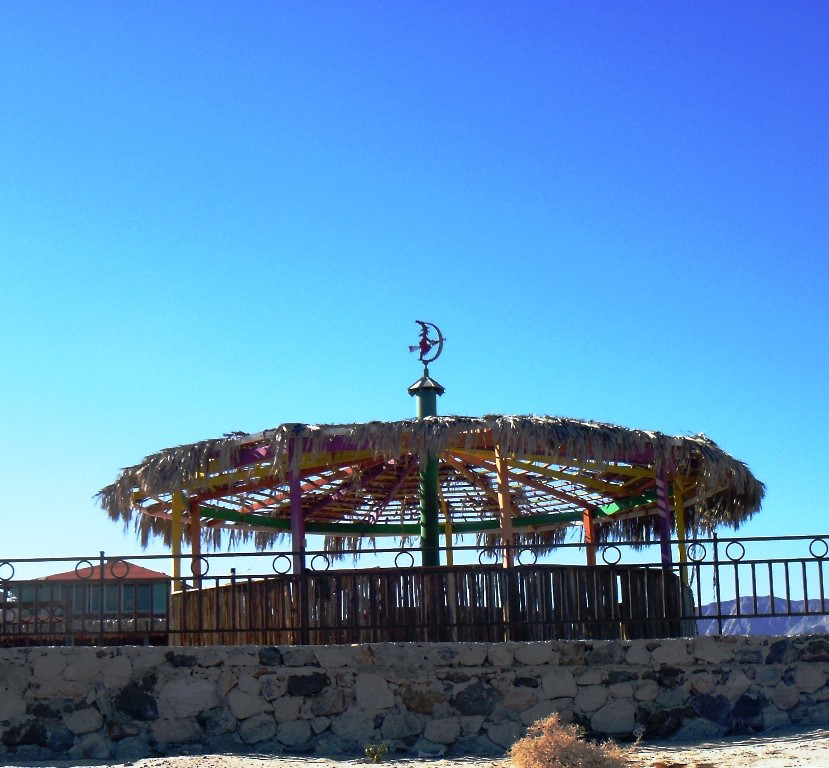
The full edition or view it online
Dan and Lisa Goy, owners of Baja Amigos RV Caravan Tours, have been making Mexico their second home for more than 30 years and love to introduce Mexico to newcomers.

